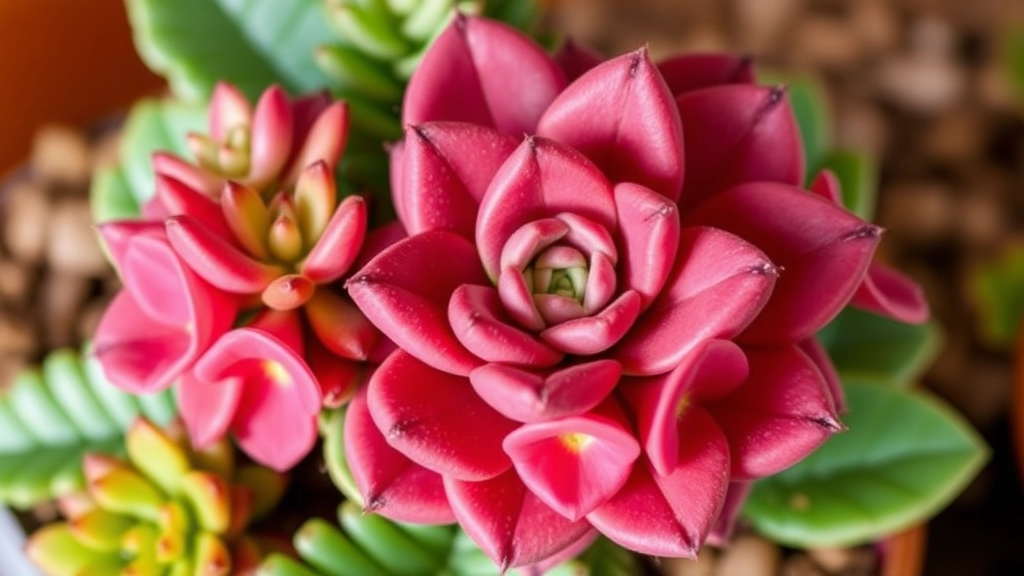Caring for Your Kalanchoe Chocolate Soldier Succulent
Are you a succulent enthusiast looking to care for your Kalanchoe Chocolate Soldier Succulent? You’ve come to the right place. This unique plant, known for its fuzzy, chocolate-tipped leaves, thrives with the right conditions. Let’s dive into the essentials for keeping your Chocolate Soldier healthy and vibrant.
Essential Care Tips
First, ensure your Kalanchoe Chocolate Soldier gets plenty of bright, indirect light to maintain its striking appearance. Overwatering is a common mistake, so let the soil dry out completely between waterings to prevent root rot. Using a well-draining soil mix is crucial for this succulent. Stick to these basic care tips, and your Chocolate Soldier will flourish.
Ideal Growing Conditions for Kalanchoe Chocolate Soldier
Are you struggling to keep your Kalanchoe Chocolate Soldier thriving?
Understanding the ideal growing conditions is crucial for nurturing this stunning succulent.
Optimal Environment
Kalanchoe Chocolate Soldier flourishes in specific conditions that mimic its native habitat.
Here’s what you need to consider:
- Light: Bright, indirect sunlight is essential. Too much direct sun can scorch the leaves, while too little can stunt growth.
- Water: These plants prefer to dry out between waterings. Overwatering can lead to root rot, a common issue for many succulent owners.
- Soil: A well-draining soil mix is vital. Succulents thrive in sandy or cactus soil that allows excess moisture to escape.
- Temperature: Ideally, maintain temperatures between 18°C to 24°C. They can tolerate slightly cooler temperatures but should be protected from frost. For more details, check out the ideal temperature for Kalanchoe Blossfeldiana growth.
- Humidity: Kalanchoe Chocolate Soldier prefers low humidity levels. High humidity can lead to fungal issues. If you’re facing similar issues, you might want to read about why Kalanchoe leaves turn red.
By providing these ideal growing conditions, you set the stage for a healthy, vibrant plant.
Light Requirements for Optimal Growth
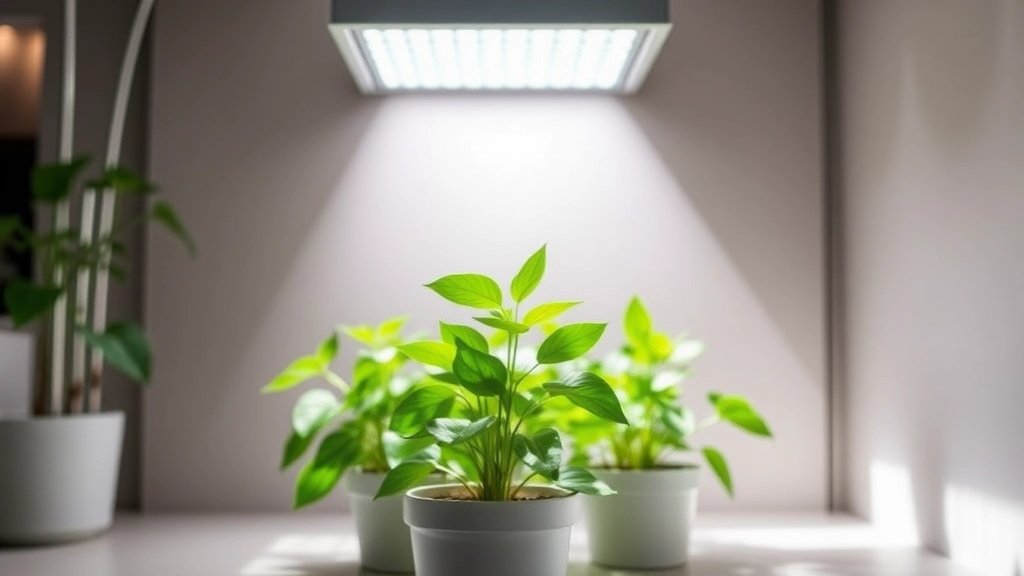
So, you’ve got your Kalanchoe Chocolate Soldier, and you’re probably wondering how to keep it thriving, right?
Light is a big deal for these beauties.
Bright, Indirect Light is Key
Kalanchoe Chocolate Soldier loves bright, indirect sunlight.
Here’s how to make sure it gets the right amount:
- Location: A south or east-facing window is ideal.
- Avoid Direct Sun: Too much direct sunlight can scorch the leaves.
- Rotate Regularly: Give your plant a gentle twist every few weeks to ensure even growth.
Signs Your Plant is Happy
You’ll know your Kalanchoe is loving its light situation if:
- The leaves are vibrant and firm.
- It’s producing new growth.
- The plant isn’t stretching towards the light.
What If It’s Not Getting Enough Light?
If your Chocolate Soldier is looking leggy or the colour is fading, it might be time to boost its light exposure.
Try moving it closer to a window or using a grow light if natural light is scarce.
Seasonal Changes Matter
Remember, the light changes with the seasons.
In winter, you might need to adjust its position to catch more sunlight.
Keeping an eye on your plant’s behaviour will help you tweak its light needs as the seasons change.
Watering Guidelines: How to Prevent Root Rot
When caring for your Kalanchoe Chocolate Soldier, one of the most pressing concerns is ensuring you don’t overwater. Root rot can quickly become a nightmare for succulent lovers, and it’s essential to understand how to keep your plant healthy and thriving.
Understanding Watering Needs
Kalanchoe Chocolate Soldier thrives in a dry environment, so it’s crucial to establish a proper watering routine. Here are key guidelines to follow:
- Frequency: Water your plant every 2-3 weeks during the growing season (spring and summer). In the dormant months (fall and winter), reduce watering to once a month.
- Check the Soil: Always check the soil moisture before watering. Stick your finger about an inch into the soil; if it feels dry, it’s time to water.
- Watering Technique: Water deeply but infrequently. Ensure water drains out of the pot’s bottom to avoid standing water, which can lead to root rot.
- Potting Choice: Use pots with drainage holes. This simple step allows excess water to escape, reducing the risk of over-saturation.
- Signs of Overwatering: Yellowing leaves, wilting, or a mushy stem are clear indicators that your plant is getting too much water.
Creating a Watering Schedule
To simplify your routine, consider setting reminders on your phone or using a calendar to track your watering days. This way, you ensure your plant receives just the right amount of moisture without the guesswork.
For more detailed advice on watering practices, check out our Kalanchoe Tomentosa watering best practices. Additionally, if you’re looking for a comprehensive care guide, our Kalanchoe Chocolate Soldier plant care guide offers valuable tips and tricks.
Best Soil Mix for Chocolate Soldier Succulents
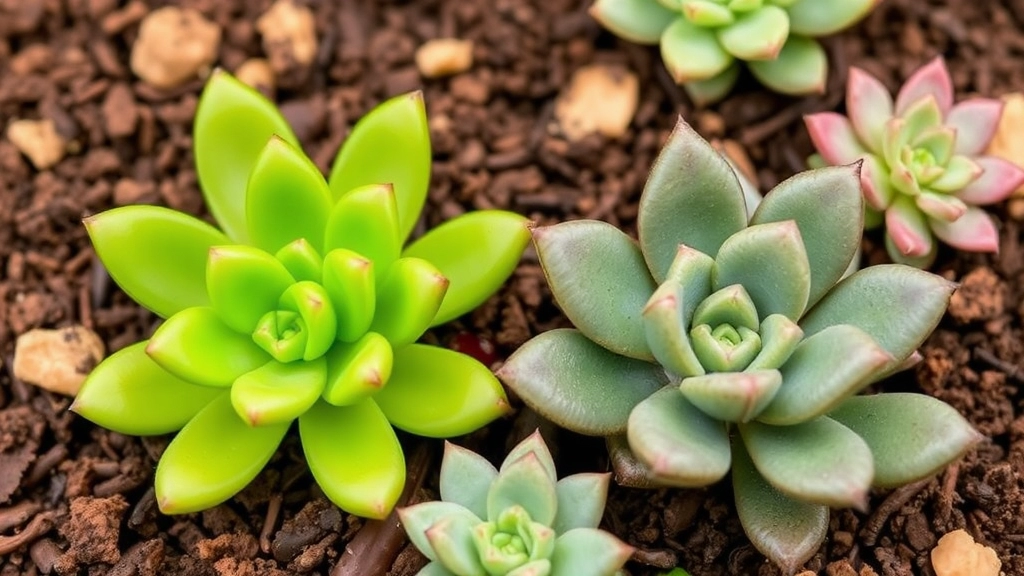
When it comes to growing Kalanchoe Chocolate Soldier, the right soil mix is crucial for ensuring healthy growth and preventing common issues like root rot.
Why Soil Matters
Using the correct soil mix can make all the difference. It provides the right drainage, aeration, and nutrients your plant needs.
Ideal Soil Composition
For Kalanchoe Chocolate Soldier, consider the following components for an optimal soil mix:
- Cactus Mix: Start with a quality cactus or succulent potting mix. These are specifically designed for good drainage.
- Perlite or Pumice: Add about 20-30% perlite or pumice to the mix. This increases aeration and helps prevent compaction.
- Coarse Sand: Incorporating a small amount of coarse sand can further improve drainage.
- Organic Matter: A touch of organic compost can provide essential nutrients without retaining too much moisture.
Recommended Soil Mix Recipe
Here’s a simple recipe to create your own soil mix:
- 50% cactus/succulent potting mix
- 30% perlite or pumice
- 20% coarse sand
Mix them well for a balanced, well-draining medium.
Tips for Success
- Avoid Regular Potting Soil: Regular potting soil retains too much moisture, which can lead to root rot.
- Check pH Levels: Aim for a slightly acidic to neutral pH (around 6.0 to 7.0) for optimal growth.
- Use a Terracotta Pot: If possible, opt for a terracotta pot as it allows for better airflow and helps wick away excess moisture.
By ensuring your Kalanchoe Chocolate Soldier is planted in the right soil mix, you set the foundation for a thriving plant.
Are you wondering why your Kalanchoe Chocolate Soldier isn’t thriving? Temperature and humidity play a crucial role in the health of these beautiful succulents.
### Ideal Temperature Range
Kalanchoe Chocolate Soldier thrives in temperatures between **20°C to 25°C (68°F to 77°F)** during the day.
– **Nighttime temperatures** can drop to around **10°C to 15°C (50°F to 59°F)**.
– Avoid exposing your plant to temperatures below **5°C (41°F)**, as this can cause stress or damage.
Maintaining the right temperature is essential for promoting healthy growth and vibrant foliage.
### Humidity Levels
Kalanchoe Chocolate Soldier prefers **moderate humidity levels**.
– Ideally, aim for **40% to 60% humidity**.
– Too much humidity can lead to issues like root rot, while too little can cause the leaves to shrivel.
If you live in a particularly humid or dry climate, consider using a **dehumidifier** or a **humidifier** to maintain optimal levels.
### Practical Tips
– **Location**: Place your plant in a well-ventilated area, away from drafts or direct air conditioning.
– **Monitoring**: Use a hygrometer to keep an eye on humidity levels, ensuring they stay within the preferred range.
For more detailed care instructions, you can check out the [complete care guide for Kalanchoe Beharensis](https://planthq.org/complete-care-guide-for-kalanchoe-beharensis-felt-plant/) or learn about [how to care for Kalanchoe flower buds](https://planthq.org/how-to-care-for-kalanchoe-flower-buds-blooming-tips/).
Fertilizing Schedule for Healthy Growth
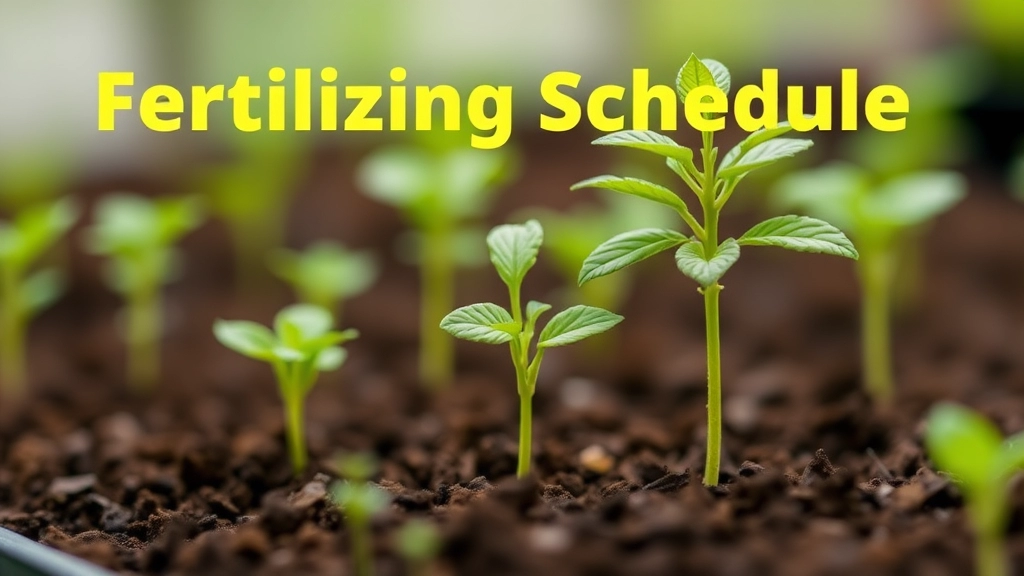
So, you’ve got your Kalanchoe Chocolate Soldier thriving, but are you giving it the nutrients it needs?
Fertilizing is key to keeping your succulent lush and vibrant.
When to Fertilize:
- Spring and Summer: This is the growing season—time to feed!
- Autumn and Winter: Hold off during the colder months; your plant needs a break.
How Often to Fertilize:
- Every 4-6 weeks: A light feed during the growing season is usually enough.
Best Fertilizer Type:
- Balanced Liquid Fertilizer: Look for something like a 10-10-10 or a succulent-specific mix.
- Dilution: Always dilute to half strength; less is more with succulents.
Application Tips:
- Water First: Make sure the soil is moist before applying fertilizer.
- Even Distribution: Pour it evenly around the base of the plant, avoiding direct contact with the leaves.
Propagation Methods: Leaf Cuttings and Offshoots
When it comes to expanding your Kalanchoe Chocolate Soldier collection, propagation is a rewarding and straightforward process. Many plant enthusiasts often wonder about the best methods to propagate their succulents effectively.
Leaf Cuttings
One of the most popular ways to propagate Kalanchoe Chocolate Soldier is through leaf cuttings. Here’s how to do it:
- Select a Healthy Leaf: Choose a plump, healthy leaf from your plant. Avoid any leaves that show signs of damage or disease.
- Cut the Leaf: Using a clean, sharp knife or scissors, cut the leaf at the base. Make sure to leave a small section of the stem attached if possible.
- Allow to Callous: Place the leaf in a dry, warm area for a few days to allow the cut end to callous over. This step is crucial to prevent rot.
- Plant the Leaf: Once calloused, place the leaf on top of well-draining soil. You can lightly press it into the soil but avoid burying it.
- Water Sparingly: Mist the soil lightly and place the pot in bright, indirect light. Water only when the soil feels dry to the touch.
Offshoots
Kalanchoe Chocolate Soldier often produces offshoots, or “pups,” which can also be propagated. Here’s how:
- Identify Offshoots: Look for small plants growing at the base of the mother plant.
- Remove Offshoots: Gently pull the offshoot away from the mother plant, ensuring you get some roots if possible.
- Plant the Offshoot: Place the offshoot in its own pot filled with a suitable soil mix.
- Care for the New Plant: Water lightly and provide bright, indirect light.
Both methods are effective, and I’ve found that propagating through offshoots tends to yield quicker results. For more detailed steps, check out our guide on propagating Kalanchoe leaves and how to propagate Kalanchoe Mother of Thousands.
Common Pests and How to Prevent Them
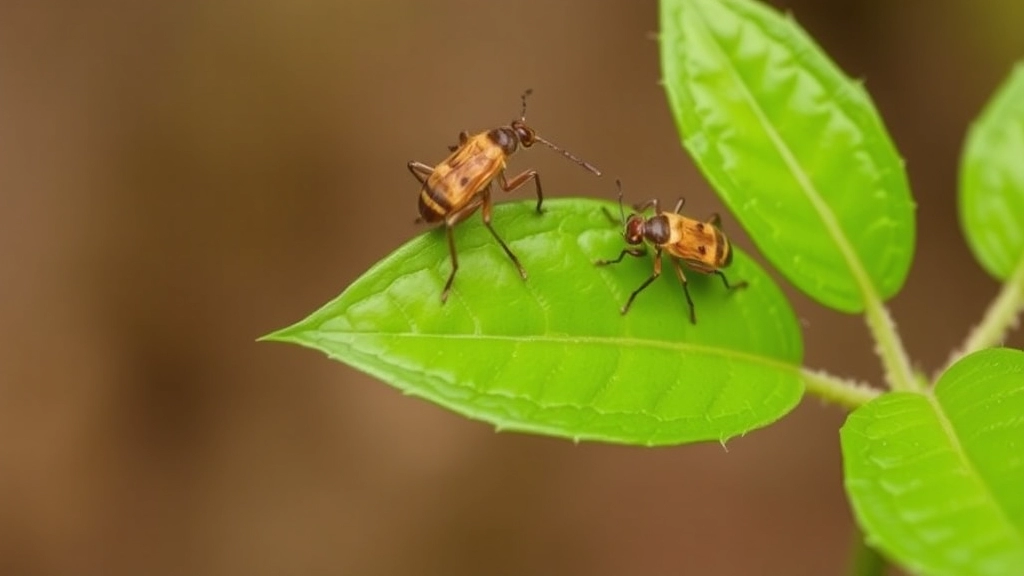
So, you’ve got your Kalanchoe Chocolate Soldier thriving, but what happens when those pesky pests decide to crash the party?
Common Pests to Watch For:
- Mealybugs: These little white fluff balls love to hide in the nooks of your plant.
- Aphids: Tiny and often green, they suck the sap right out of your succulent.
- Spider Mites: If you notice fine webbing, these guys might be the culprits.
- Scale Insects: They look like little bumps on the leaves and can be tough to spot.
Prevention Tips:
- Regular Inspection: Make it a habit to check your plants weekly. Catching pests early is key!
- Clean Leaves: Wipe down leaves with a damp cloth to remove dust and deter pests.
- Neem Oil: A natural pesticide that’s effective against a variety of pests. Just mix with water and spray.
- Isolation: If you bring home a new plant, keep it separate for a few weeks to ensure it’s pest-free.
Signs of Infestation:
- Yellowing leaves
- Stunted growth
- Sticky residue on leaves (honeydew from sap-sucking pests)
If you notice any of these signs, act fast!
Toxicity Concerns for Pets and Humans
When it comes to caring for your Kalanchoe Chocolate Soldier, one major concern can be its toxicity.
Is Kalanchoe Chocolate Soldier Safe for Pets and Humans?
Unfortunately, Kalanchoe species, including the Chocolate Soldier, contain compounds that can be harmful if ingested. For more detailed information, you can refer to our guide on Kalanchoe Poisonous to Dogs.
Toxicity Levels
- Pets:
- Cats and dogs are particularly at risk.
- Symptoms of ingestion may include:
- Vomiting
- Diarrhoea
- Lethargy
- Abdominal pain
- Humans:
- While not typically fatal, ingestion can lead to mild gastrointestinal discomfort.
- Children are especially vulnerable, so keep plants out of reach.
Precautionary Measures
To ensure a safe environment for your pets and family, consider the following:
- Placement:
Position your Kalanchoe out of reach of pets and small children.
- Education:
Inform family members about the plant’s toxicity. For more tips on keeping your Kalanchoe healthy, check out our Chocolate Soldier Kalanchoe Care Guide.
- Alternatives:
If you have pets, consider non-toxic plant options like spider plants or Boston ferns.
Understanding these toxicity concerns allows you to enjoy your Kalanchoe Chocolate Soldier while keeping your loved ones safe.
How to Deal with Overwatering or Underwatering Kalanchoe Chocolate Soldier

Ever found yourself staring at your Kalanchoe Chocolate Soldier, wondering if it’s too dry or drowning in water? You’re not alone. Many plant lovers face the challenge of getting the watering just right.
Recognising the Signs
First things first, let’s learn to read the signs.
- Overwatering:
- Leaves turning yellow and mushy?
- A foul smell from the soil?
- Wilting despite wet soil?
- Underwatering:
- Leaves looking shrivelled or crispy?
- Soil pulling away from the pot edges?
- Dropping leaves?
Quick Fixes for Overwatering
If you suspect overwatering, don’t panic! Here’s what you can do:
- Stop Watering: Let the soil dry out completely before you even think about watering again.
- Check Drainage: Make sure your pot has drainage holes. If not, it’s time for a new pot!
- Repot if Needed: If the roots are rotting, gently remove the plant from the soil, trim away any mushy roots, and repot in fresh, dry soil.
- Air it Out: Place your plant in a warm, dry spot to help it recover.
Quick Fixes for Underwatering
Now, if your plant is thirsty, here’s how to perk it up:
- Water Thoroughly: Give it a good soak until water drains out the bottom.
- Humidity Check: If your home is particularly dry, consider misting the plant occasionally.
- Regular Schedule: Set a reminder to check the soil moisture weekly.
Finding the Balance
The key to happy Kalanchoe Chocolate Soldiers is balance.
- Use a moisture meter if you’re unsure.
- Remember, these succulents prefer to be on the drier side.
- Always check the top inch of soil before watering.
Repotting Tips for Mature Chocolate Soldier Plants
As your Kalanchoe Chocolate Soldier matures, repotting becomes an essential aspect of its care. It’s common to wonder when and how to repot these beautiful succulents.
Frequently Asked Questions (FAQs) about Kalanchoe Chocolate Soldier Succulent
What kind of light does a Kalanchoe Chocolate Soldier need?
The Kalanchoe Chocolate Soldier thrives in bright, indirect sunlight. A south or east-facing window is ideal. Avoid direct sunlight, as it can scorch the leaves, and rotate the plant every few weeks for even growth.
How can I tell if my Kalanchoe Chocolate Soldier is getting enough light?
If your plant’s leaves are vibrant and firm, it’s producing new growth, and it isn’t stretching towards the light, then it’s likely getting the right amount of light.
What soil mix is best for Kalanchoe Chocolate Soldier?
A well-draining soil mix is crucial. Use a combination of 50% cactus/succulent potting mix, 30% perlite or pumice, and 20% coarse sand. This mix ensures good drainage and aeration.
How often should I fertilize my Kalanchoe Chocolate Soldier?
Fertilize every 4-6 weeks during the growing season (spring and summer). Use a balanced liquid fertilizer diluted to half strength. Avoid fertilizing in autumn and winter as the plant needs a break during these colder months.
What are common pests that affect Kalanchoe Chocolate Soldier, and how can I prevent them?
Common pests include mealybugs, aphids, spider mites, and scale insects. Prevent infestations by regularly inspecting your plants, wiping down leaves, using neem oil, and isolating new plants for a few weeks.
How can I tell if I’m overwatering or underwatering my Kalanchoe Chocolate Soldier?
Overwatering signs include yellow, mushy leaves, a foul smell from the soil, and wilting despite wet soil. Underwatering signs include shriveled or crispy leaves, soil pulling away from the pot edges, and dropping leaves.
What should I do if I’ve overwatered my Kalanchoe Chocolate Soldier?
Stop watering and let the soil dry out completely. Ensure your pot has drainage holes and consider repotting if the roots are rotting. Place the plant in a warm, dry spot to help it recover.
What should I do if my Kalanchoe Chocolate Soldier is underwatered?
Water the plant thoroughly until water drains out the bottom. Check the humidity levels and mist the plant occasionally if your home is dry. Set a reminder to check the soil moisture weekly.
What type of pot is best for Kalanchoe Chocolate Soldier?
A terracotta pot is recommended as it allows for better airflow and helps wick away excess moisture, reducing the risk of root rot.
How does seasonal change affect the light needs of Kalanchoe Chocolate Soldier?
Light conditions change with the seasons. In winter, you might need to adjust the plant’s position to catch more sunlight. Monitor your plant’s behavior and tweak its light exposure as needed.
References
-
The Spruce – Growing Kalanchoe Succulents
-
Gardenista – Gardening 101: Kalanchoe
-
Gardening Know How – Kalanchoe Plant Care
